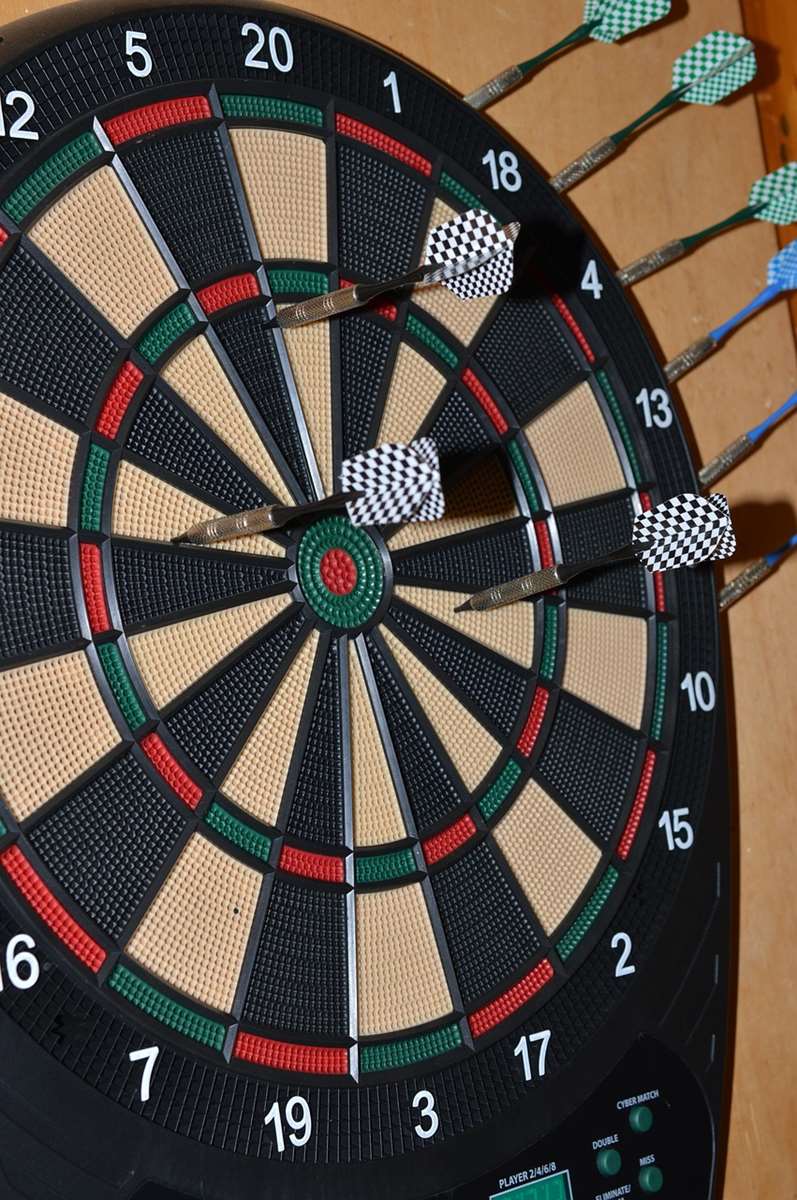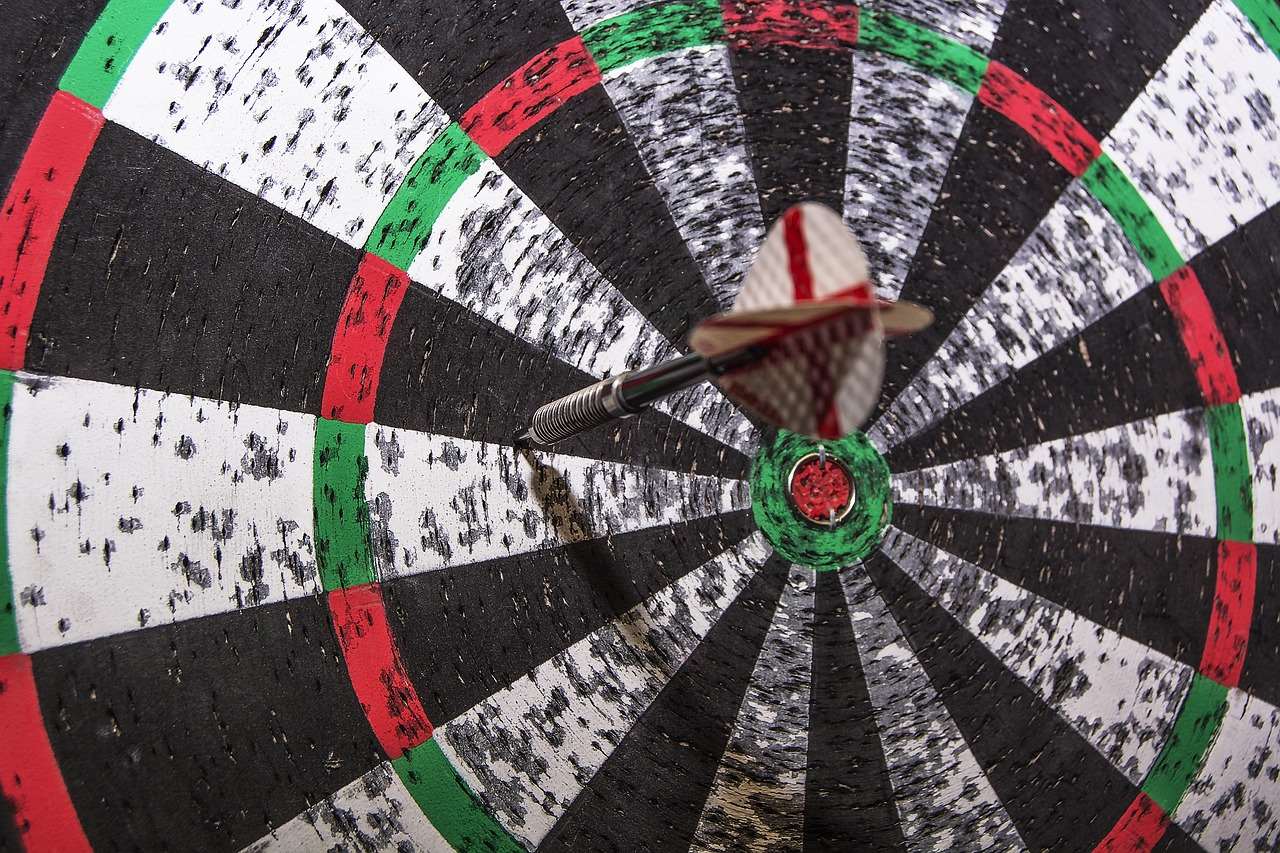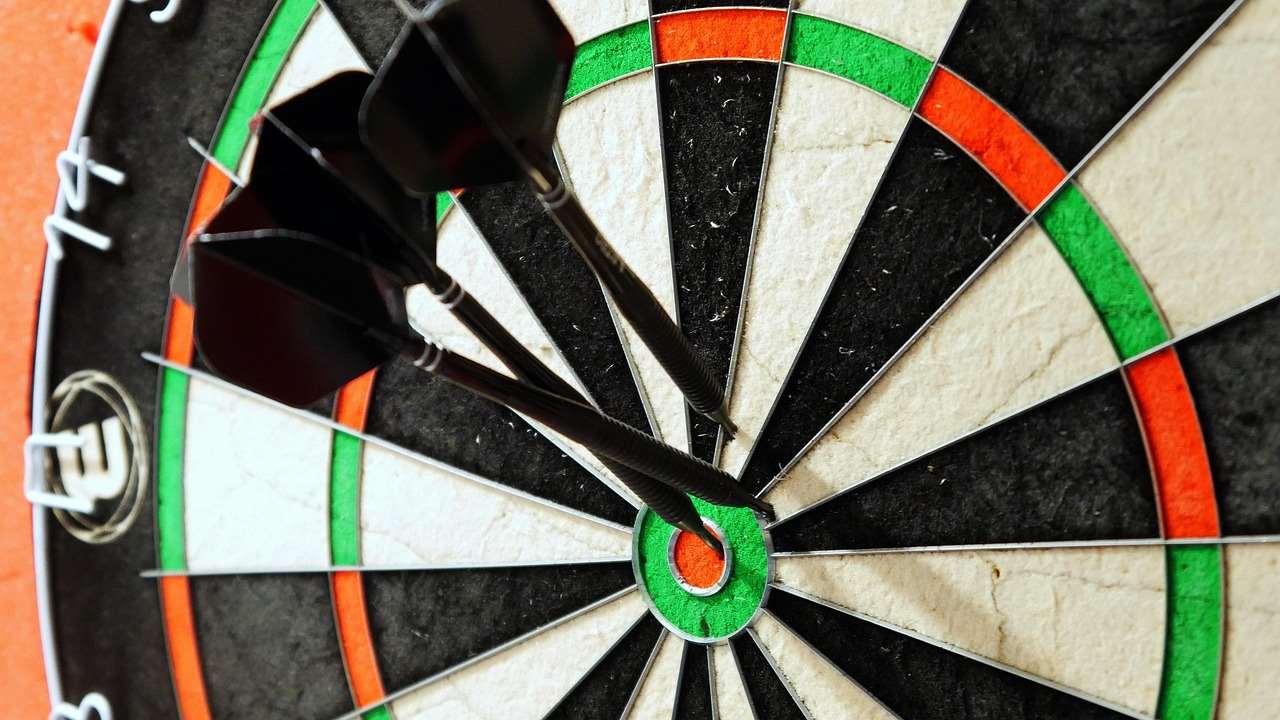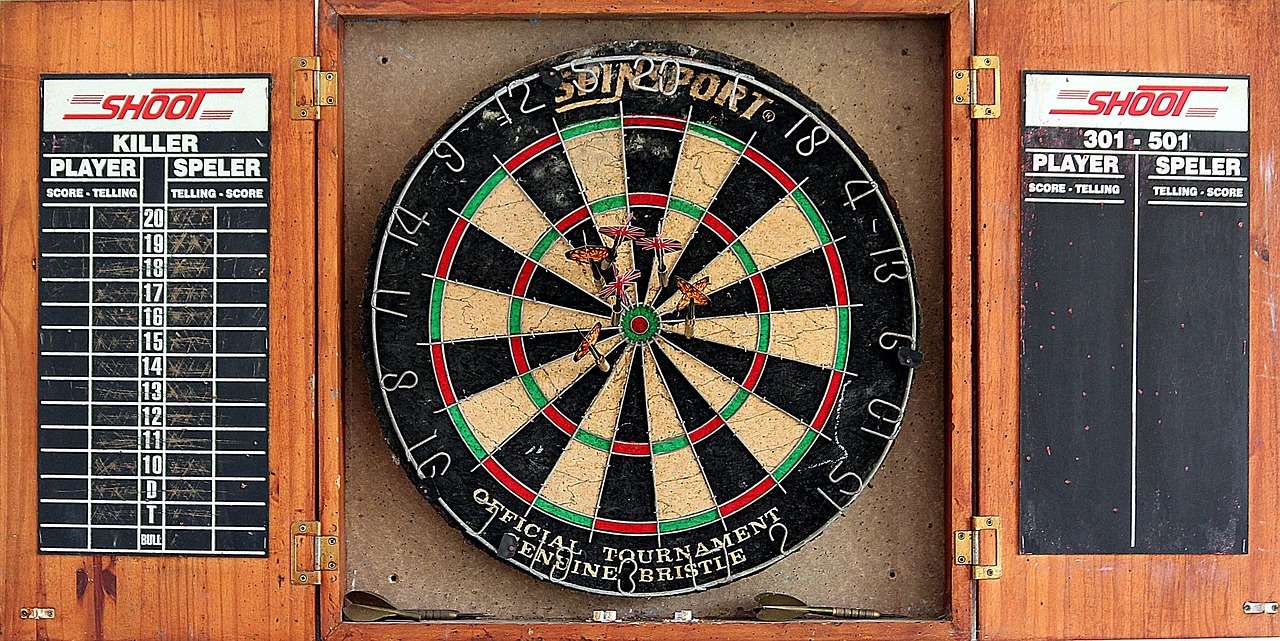Darts In Schools Programs offer a fantastic way to introduce students to a fun, engaging, and mentally stimulating sport, fostering teamwork, improving math skills, and promoting sportsmanship. This article explores the benefits, implementation, and long-term impact of these programs, providing a comprehensive guide for educators, parents, and anyone interested in bringing darts to their local schools.
⚠️ Still Using Pen & Paper (or a Chalkboard)?! ⚠️
Step into the future! The Dart Counter App handles all the scoring, suggests checkouts, and tracks your stats automatically. It's easier than you think!
Try the Smart Dart Counter App FREE!Ready for an upgrade? Click above!
Why Implement Darts In Schools Programs?
The implementation of Darts In Schools Programs provides a multitude of benefits that extend beyond the simple enjoyment of the game. It’s a strategic move to enhance students’ cognitive abilities, promote inclusivity, and introduce a sport that can be enjoyed throughout their lives. Let’s delve into some compelling reasons to champion darts in education.
Enhancing Cognitive Skills and Academic Performance
Darts requires more than just throwing an object at a board. It demands focus, precision, and mental calculation. Students participating in Darts In Schools Programs will hone their:
- Mathematical Skills: Calculating scores, averages, and remaining points sharpens arithmetic skills in a practical and engaging way.
- Strategic Thinking: Planning each throw to maximize score and set up future opportunities develops strategic thinking and problem-solving abilities.
- Concentration and Focus: Maintaining focus under pressure is crucial for success in darts, translating to improved concentration in academic settings.
These enhanced cognitive abilities can positively impact academic performance across various subjects.

Promoting Inclusivity and Accessibility
Unlike many traditional sports, darts is a highly inclusive activity. It doesn’t require specific physical attributes like height, speed, or strength, making it accessible to students of all abilities and backgrounds. Darts In Schools Programs can:
- Level the Playing Field: Students who may not excel in traditional sports can find success and build confidence in darts.
- Encourage Participation: The inclusive nature of darts promotes participation from a wider range of students, fostering a sense of community.
- Break Down Barriers: Darts transcends social and cultural barriers, bringing students together through a shared activity.
The accessibility of darts promotes a more inclusive and welcoming school environment.
Developing Sportsmanship and Character
Beyond the technical skills, darts fosters important character traits and promotes sportsmanship. Through Darts In Schools Programs, students learn:
- Respect for Opponents: Darts etiquette emphasizes respect for opponents, teaching students to compete fairly and gracefully.
- Handling Pressure: Performing under pressure in competitive situations builds resilience and emotional control.
- Responsibility: Taking ownership of their performance and adhering to the rules instills a sense of responsibility.
These qualities are essential for success both on and off the dartboard.
Considering all of these benefits, introducing darts programs into schools can significantly enhance the overall educational experience.
Implementing Successful Darts In Schools Programs
Successfully implementing a Darts In Schools Programs requires careful planning, dedicated resources, and a commitment to creating a positive and engaging environment. Here’s a step-by-step guide to help you get started.
Securing Funding and Resources
The first step is to secure the necessary funding and resources. Consider the following:
- School Budget: Explore opportunities to allocate funds from the school’s budget for extracurricular activities.
- Grants and Sponsorships: Research grants from sporting organizations or seek sponsorships from local businesses.
- Fundraising: Organize fundraising events like bake sales, car washes, or darts tournaments to raise money.
With adequate funding, you can purchase equipment, train instructors, and sustain the program.

Training Instructors and Coaches
Proper instruction is crucial for the success of any Darts In Schools Programs. Ensure that instructors and coaches are:
- Knowledgeable: Have a thorough understanding of the rules, techniques, and strategies of darts.
- Qualified: Obtain certifications or training from recognized darts organizations.
- Engaging: Be able to motivate and inspire students to learn and improve.
Well-trained instructors can create a positive learning environment and help students develop their skills effectively. You might consider attending Experience Attending Live Darts to gain inspiration.
Creating a Safe and Supportive Environment
Safety should be a top priority when implementing Darts In Schools Programs. Here are some essential considerations:
- Proper Setup: Ensure that dartboards are mounted securely and in a safe location, away from high-traffic areas.
- Safety Guidelines: Establish clear safety guidelines and ensure that all students understand and follow them.
- Supervision: Provide adequate supervision during practice and competitions to prevent accidents.
A safe and supportive environment encourages students to participate without fear of injury or judgment.
Structuring the Program
Consider these points when structuring your Darts In Schools Programs:
- Curriculum: Develop a structured curriculum that covers the basics of darts, techniques, and strategies.
- Practice Sessions: Schedule regular practice sessions that allow students to hone their skills.
- Competitions: Organize internal competitions to provide students with opportunities to test their skills and compete against their peers.
A well-structured program keeps students engaged and motivated.
The Long-Term Impact of Darts In Schools Programs
The benefits of Darts In Schools Programs extend far beyond the classroom. These programs can have a lasting impact on students’ lives, shaping their personal growth and future opportunities.
Developing Life Skills
Participation in Darts In Schools Programs can help students develop valuable life skills such as:
- Problem-Solving: Strategizing and adapting to different game situations enhances problem-solving abilities.
- Decision-Making: Choosing the right throw and target under pressure improves decision-making skills.
- Time Management: Balancing practice, competitions, and other commitments teaches time management.
These skills are transferable to various aspects of life, from academics to careers.

Building Confidence and Self-Esteem
Success in darts can significantly boost students’ confidence and self-esteem. Achieving personal bests, winning competitions, and receiving recognition for their skills can:
- Increase Self-Worth: Building confidence through mastery of a skill.
- Promote Self-Belief: Believing in their abilities.
- Encourage Resilience: Developing the ability to bounce back from setbacks.
These positive experiences can have a profound impact on students’ overall well-being.
Promoting Physical and Mental Well-being
While darts is not as physically demanding as some sports, it promotes both physical and mental well-being. The act of throwing darts requires coordination and control, improving fine motor skills. Additionally, the mental focus required for darts can help reduce stress and improve concentration. Check out What To Expect At Live Darts to see how focus is valued.
Creating Opportunities for Higher Education and Careers
Participation in Darts In Schools Programs can open doors to higher education and career opportunities. Some colleges and universities offer scholarships for talented darts players. Additionally, the skills and qualities developed through darts, such as strategic thinking, problem-solving, and teamwork, are highly valued by employers. These may assist with Getting Tickets For Darts Events to increase exposure.
Addressing Common Concerns About Darts In Schools Programs
While the benefits of Darts In Schools Programs are numerous, some educators, parents, and community members may have concerns about safety, appropriateness, and potential distractions. Here’s how to address these concerns effectively.
Safety Concerns and Misconceptions
One of the primary concerns is safety. It’s crucial to emphasize that darts, when played under proper supervision and with clear safety guidelines, is a safe activity. Address misconceptions by:
- Highlighting Safety Measures: Clearly communicate the safety protocols in place, such as secure dartboard mounting, designated throwing areas, and supervised practice sessions.
- Providing Education: Educate students about safe dart-throwing techniques and the importance of following the rules.
- Demonstrating Safe Practices: Showcase safe dart-playing practices through demonstrations and visual aids.
By addressing safety concerns proactively, you can alleviate fears and gain support for the program. Be sure to see Guide To Attending Darts Events to ensure that the sport is seen in a safe and positive manner.

Appropriateness and Educational Value
Some may question the appropriateness of darts in a school setting, viewing it as a recreational activity rather than an educational one. To address this, emphasize the educational value of darts, highlighting its ability to:
- Enhance Cognitive Skills: Demonstrate how darts improves math skills, strategic thinking, and concentration.
- Promote Inclusivity: Show how darts levels the playing field and encourages participation from students of all abilities.
- Develop Life Skills: Explain how darts fosters sportsmanship, responsibility, and resilience.
By emphasizing the educational benefits, you can demonstrate that darts programs align with the school’s mission and goals. Consider the Darts Culture And Community Guide to better enhance the programs.
Potential Distractions and Time Management
Another concern is that Darts In Schools Programs may distract students from their studies. To mitigate this, ensure that:
- The Program is Structured: The program is well-structured with designated practice times that do not interfere with academic schedules.
- Academic Performance is Monitored: Students’ academic performance is monitored to ensure that participation in darts does not negatively impact their grades.
- Emphasis on Balance: Students understand the importance of balancing their extracurricular activities with their academic responsibilities.
By managing the program effectively, you can prevent it from becoming a distraction and ensure that students benefit from both academic and extracurricular activities.
Resources for Implementing Darts In Schools Programs
To help you get started with implementing Darts In Schools Programs, here are some valuable resources:
- Darts Organizations: Contact national and local darts organizations for guidance, support, and training materials.
- Online Resources: Explore online resources such as darts forums, websites, and instructional videos for tips and best practices.
- Experienced Educators: Seek advice from educators who have successfully implemented darts programs in their schools.
With the right resources and support, you can create a thriving Darts In Schools Programs that benefits students for years to come.

Conclusion
Darts In Schools Programs offer a powerful platform for enhancing cognitive skills, promoting inclusivity, developing sportsmanship, and building confidence in students. By addressing common concerns and utilizing available resources, educators can create a positive and engaging environment where students can thrive. The long-term impact of these programs extends far beyond the classroom, shaping students into well-rounded individuals with valuable life skills. Embrace the opportunity to bring darts to your local schools and empower students to reach their full potential. Take the first step today by researching funding options and contacting your local darts organization to explore how you can bring this enriching program to your school.
Hi, I’m Dieter, and I created Dartcounter (Dartcounterapp.com). My motivation wasn’t being a darts expert – quite the opposite! When I first started playing, I loved the game but found keeping accurate scores and tracking stats difficult and distracting.
I figured I couldn’t be the only one struggling with this. So, I decided to build a solution: an easy-to-use application that everyone, no matter their experience level, could use to manage scoring effortlessly.
My goal for Dartcounter was simple: let the app handle the numbers – the scoring, the averages, the stats, even checkout suggestions – so players could focus purely on their throw and enjoying the game. It began as a way to solve my own beginner’s problem, and I’m thrilled it has grown into a helpful tool for the wider darts community.